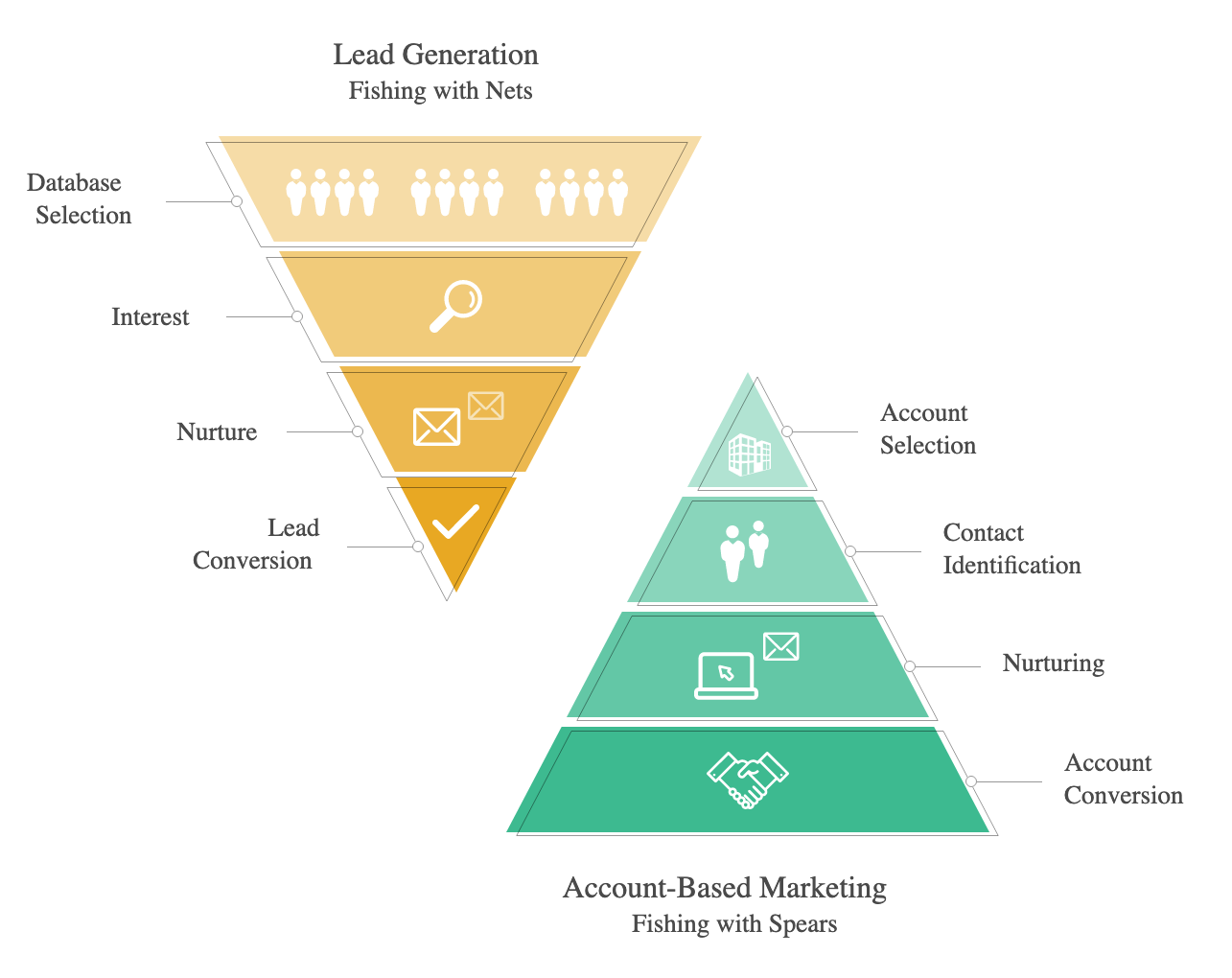How to Succeed in Account-Based Advertising
Right now, Account-based Marketing (ABM) is the hottest B2B ticket in town — with 87% of marketers stating that it delivers better ROI than other marketing activities.
While for many people it may be a relatively new strategy, it has in fact been around for many years in different guises. In fact, you might've already heard the term as Key Account Management, Key Account Marketing, or Client-centric Marketing.
The objective of ABM is, quite simply, to treat one account as a market of one, i.e. to focus all your energy (and resources) on engaging, winning, and maintaining one named account.
Expanding on this, ABM has four underlying principles:
- Client centricity and insight
- Partnership between sales and marketing
- Focus on reputation, relationships and, ultimately, revenue
- Tailored programs and campaigns
Simple right? Well, the reality is that to justify this level of effort and resources the prize must be sufficiently large enough to warrant this expenditure. ABM therefore is best suited to complex, high 'ticket price' solutions with longer life-cycle sales, and where typically multiple stakeholders are involved.
Strategic ABM (one-to-one) and one-to-few (clusters of 15-20 accounts with shared commonality, i.e. vertical, industry, pain, challenge, etc.) have defined ABM for the last few years.
But there is a new ABM kid on the block who is shaking things up: one-to-many ABM.
Free Access: Strategic Account Planning Template
The Rise of the ABM Tech Stack
One of the key reasons why ABM has become so popular and now forms a key part of any B2B marketing and sales playbook is the use of technology to automate and target those accounts (and individuals) you are looking to influence and convert.
The rise of one-to-many ABM programs targeting hundreds (and even thousands) of accounts has been largely possible due to the technological and data advances that are now available to B2B marketers.
Quite simply, one-to-many ABM would not have been possible several years ago.
Bev Burgess, one of the world's leading ABM authorities, recently stated "One-to-many ABM now allows companies to have an 'Always-on' strategy to those accounts that are of interest to you'".
What is Account-based Advertising?
The analogy most commonly used to describe the difference between ABM and Inbound Marketing is fishing with spears vs. fishing with nets. As the image below shows, ABM is the inverse of Inbound Marketing:

Image Source
Account selection is the starting point. As such, being able, from the outset, to target named accounts and the relevant Decision Making Unit (DMU) within the account is the foundation of any successful Account-based Marketing program.
And this is where Account-based Advertising comes in. Account-based Advertising allows you to hyper-target and hyper-personalize digital marketing campaigns to these named accounts.
Simply put, account-based advertising means your digital advertising campaigns are highly focused and centered on only those accounts you wish to engage, penetrate, and win.
Account-based advertising allows you:
- Amplify your digital advertising campaigns to increase the chances of winning a deal. Expanding your retargeting from the original website visitor to the wider DMU will increase your chances significantly.
- We're familiar with the large number of target account contacts involved in a decision making process (6-10 according to Gartner). Digital advertising allows you to reach and influence this wider important group.
- Focus your marketing spend and drive higher ROI of your digital advertising budget by targeting those accounts that display intent signals.
How to be Successful with Account-based Advertising
Let's take a look at what makes up a successful account-based advertising campaign.
1. Consider your account-based advertising options.
There are many digital advertising options available (and the number is growing). There are a large number of digital advertising partners and ABM platforms that can provide access to these channel tactics.
Ensure you carefully choose your tactics and channels, based on your marketing budget, messaging, and audience.
Comments
Post a Comment